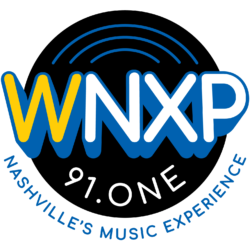“It’s less about entertainment and more about enchantment,” said singer-songwriter Natalie Mering (who writes, records and performs as Weyes Blood), about her approach to the visual elements of her art, including album photography, choreographed music videos, even her website. But enchanting is also a lovely way to describe the cognitive-spiritual effect of Mering’s voice on listeners. The warmth and resonance of her singing is nothing short of spellbinding. And she’s employed that voice expertly, again, on her fifth studio record, And In The Darkness, Hearts Aglow.
Written in the throes of the COVID-19 pandemic, these songs came to Mering in solitude, but were fleshed out to their fullest and richest in a historic Hollywood recording studio that previously hosted The Beach Boys and The Mamas and The Papas. It’s evident throughout And In The Darkness, Hearts Aglow that Mering could summon these classic pop artists, forefathers and mothers of “The California Sound,” in that space while creating a work still stunningly, vulnerably, uniquely Weyes Blood.
As on the track “Hearts Aglow,” a swaying, piano arpeggio tale that equates falling in love with falling from an ocean pier ferris wheel into black water, we follow Mering into the dark without certainty.
Oh, hearts aglow
Weyes Blood, “Hearts Aglow”
We don’t know where we’re going
We just keep getting higher
Hearts aglow
You can’t control hearts aglow
But it’s OK, you see, because the light we seek to illuminate the path is always within.
Listen to the full record and read my interview with Mering, below. Weyes Blood’s “In Holy Flux” tour stops at Nashville’s Brooklyn Bowl on February 22.
On the Record: A Q&A With Weyes Blood
Celia Gregory: Hi, Natalie,I guess you’re probably connecting from the West Coast currently, right? You’ve already been on tour for a little bit as we’re talking now.
Natalie Mering: Yeah, I’m in Los Angeles.
CG: Cool. You get to be home for a little bit before you go back out. It looks like you have tour dates abroad before you come back to the States, and actually your first U.S. date back is here in Nashville. We’re so excited to have you at the Brooklyn Bowl!
NM: Me, too. I’m excited to come back.
CG: Well, the new record is beautiful, And In The Darkness, Hearts Aglow. And I want to touch first, before we even get into the music, about the amazing visuals — even your website reflects this glowing heart as the cursor alights the page. I’m also thinking of some of the choreography you’ve done so far. Can you speak to overall, as an artist, how important making your music visual for folks is to you as part of the creative process, including what folks can see and not just hear?
NM: I think it’s so fun to play around with, like, the mythical space of the music you’re creating, because it really is for me, it’s like the soundtrack of my life, but it’s also kind of an imaginary life. And songwriting, I think when it really serves a greater purpose, is kind of like taking the mundane and making it this transcendent thing. It’s less about entertainment, more about enchantment. And if I can create a visual universe that reflects subconsciously my feelings or this mythical headspace, I think it helps with the reality of, “it’s just some music made by some person.”
CG: Enchantment! What a great word for this that is. The tunes are enchanting. You know, it’s hard for me not to ask you around the timing of [2019 release] Titanic Rising and then the world shutting down, sort of the arc of your life as a as a person, but also as a performer between these two records. There are some hints in some of the songs on this record about how you spent time over the pandemic. But do you care to share about that creative and personal process between these two albums?
NM: It was really interesting because we were still basically in the middle of our touring for the last record, so things stopped pretty abruptly, and I just felt like the only thing I really could do was make another album as soon as I could. And it was so different creating within a vacuum of not having a lot of musicians being able to just stop by or be spontaneous — everything had this very specific boundary and plan. And that was an interesting way to create. It made me go more internal and subterranean and kind of like find it all within myself without bouncing off of other people and jamming. And by the time we got to the studio and were collaborating and jamming together, it was pretty cathartic. I’d really learned how much it meant to me, but it also felt a lot more abstract in light of the events of the world.
CG: When you said you had to go sort of inward, what did you find there? Were there impressions from the last record that carried over, or did you find yourself writing about the situation you were in, like smack in the middle of the pandemic?
NM: Yeah, it felt like less about “I think this is going wrong” or “this is going to happen” — it was more emotional and an immediate response to some pretty extreme situations. And it was more about intimacy. Because I think the pandemic brought that up for a lot of people: they’re relationships, who they’re closest to and who, during a pandemic, they see in-person.
CG: You did take part in the production of this, right? How did you get these sort of simple songs — maybe it started with a chord progression or a turn of phrase — to sound as lush and as full as they do? Explain some of those decisions production-wise to finalize the record.
NM: Well, I recorded in a really cool studio, it’s called East West, Studio Three, which is where [The Beach Boys] made Pet Sounds. The reverb chamber, the studio, has an incredible sound to it and it’s very lush. So we tried to record everything live in that room, going into the chambers to try to capture all the interactions between the mics and the frequencies. And so it was really cool and we could really capture that room sound. I just felt like that kind of reflected that interior castle, you know, like the room inside yourself or the room in your mind. And it’s all very symbolic for me when making music, trying to make the sounds physically represent the sentiments.
Like “Grapevine” being a road song, it has an echoing bell, almost like a mission on the side of the road off of the Grapevine itself, which is a freeway in California. And with that song in particular, there’s this this live feel to it. It was just one take. And yeah, it kind of feels like driving at night.
CG: I was thinking about the beginning of “Hearts Aglow,” which starts with this warmth and this crackle and then it goes into that more classic chord structure. I would describe your songs as timeless sounding. I sent this record to my mom. Weyes Blood is mom-approved, it’s just so rich.
NM: Oh, no way! Mom approves!
CG: Big time. Do you remember when you recognized, “OK, my voice is not just an instrument I can use. I’ve got to use it, like this as a gift” knowing or maybe believing that your voice was something that needed to be shared?
NM: I think as a little girl I knew I had a pretty good voice. It was a little raspy, though. It was a little funny sounding. But I did love to sing and I and I could do vibrato and I would practice singing with Judy Garland. And my mom was the real, you know, she really wanted to be a singer songwriter. So she was always making me sing with her. I think it became clear that my voice was really good in high school because I was in all the select choir ensembles. But even then I wasn’t offered a lot of solos. I wasn’t like chosen as the prize singer. I was always kind of a character voice. And I think it took many years of touring and honing in on it to be what it is now. It was like a rough diamond, maybe. And then I just had enough life experiences and diligence to make it as good as it is now. It’s been a process. And I think that should be encouragement to anybody who is worried about if they’re ever going to be a great singer. Sometimes you can take some raw talent, where it’s obvious there’s something interesting going on. But to be really, truly great is just time and practice, you know?
CG: On one hand I hear “practice makes perfect,” but these songs are pretty demanding when you’re performing this many songs in a row, right? I mean, is touring tough on your voice? How do you how do you take care of your instrument on the road?
NM: Yeah, I do a lot of vocal warm-ups. So I’m constantly practicing breathing. You strain your voice if you forget to breathe and you try to push sound out when you don’t have any breath. So it’s pretty simple, but you have to train yourself to breathe because I feel like most people forget to breathe all the time.
I avoid drinking a lot of alcohol and I do act kind of safely. I can’t drink a lot of liquor and expect my voice to stay good, you know what I mean? So I drink 6 hours before [my show] a ton of water.
CG: It’s not the answer people that want to “rock and roll lifestyle” this thing want to hear.
NM: I know, they don’t want to hear it! And I could be even more precious. But I guess I’m a little bit lucky in that I’m kind of durable also.
CG: I want to ask about the structuring of the album, because I first heard this with headphones on and you know, it’s fun to consume singles as they drop. But when I hear a full album, I want to be able to focus on it. And I did just that [with And In The Darkness, Hearts Aglow]. The first song, “It’s Not Just Me, It’s Everybody,” is such a great introduction, thematically and sonically, to the album. Do you recall the choice to put that first?
NM: That was a bit of a throwaway song that I had a feeling in my head, a feeling in my gut about. I was like, “It’s kind of silly, but I think this might be really cool.” And then we really lucked out in the studio when we recorded it. It was me and Joey Waronker and this guy Kenny Gilmore on bass, and I could just feel in the room that we had a really sweet groove. It felt like it was a cool entry point. Even though it’s so long and kind of slow-building, it doesn’t feel like it. It’s almost like taking somebody’s hand and walking them along the perimeter of a narrative and kind of guiding them into the more dense rest of the album.

